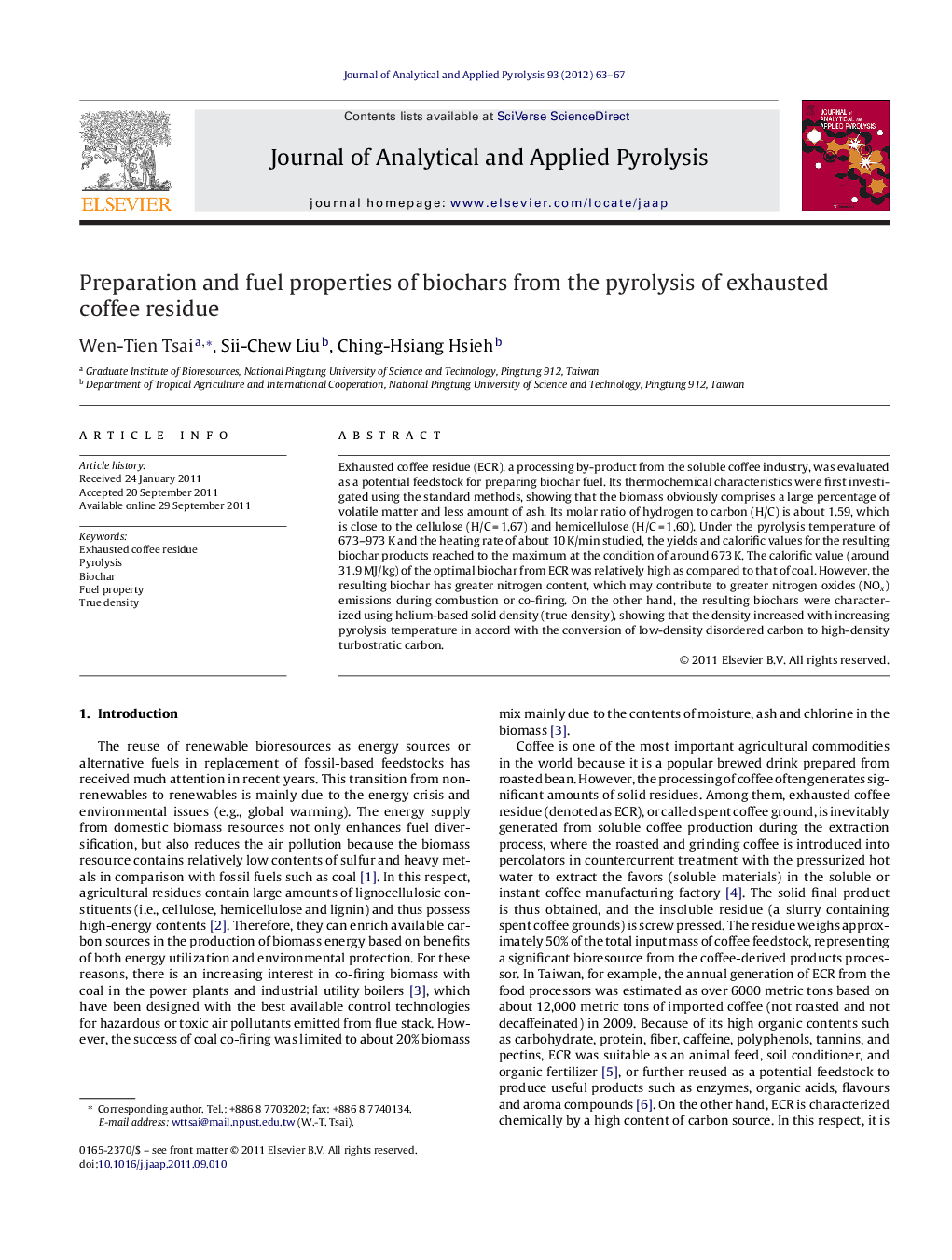| Article ID | Journal | Published Year | Pages | File Type |
|---|---|---|---|---|
| 1197668 | Journal of Analytical and Applied Pyrolysis | 2012 | 5 Pages |
Exhausted coffee residue (ECR), a processing by-product from the soluble coffee industry, was evaluated as a potential feedstock for preparing biochar fuel. Its thermochemical characteristics were first investigated using the standard methods, showing that the biomass obviously comprises a large percentage of volatile matter and less amount of ash. Its molar ratio of hydrogen to carbon (H/C) is about 1.59, which is close to the cellulose (H/C = 1.67) and hemicellulose (H/C = 1.60). Under the pyrolysis temperature of 673–973 K and the heating rate of about 10 K/min studied, the yields and calorific values for the resulting biochar products reached to the maximum at the condition of around 673 K. The calorific value (around 31.9 MJ/kg) of the optimal biochar from ECR was relatively high as compared to that of coal. However, the resulting biochar has greater nitrogen content, which may contribute to greater nitrogen oxides (NOx) emissions during combustion or co-firing. On the other hand, the resulting biochars were characterized using helium-based solid density (true density), showing that the density increased with increasing pyrolysis temperature in accord with the conversion of low-density disordered carbon to high-density turbostratic carbon.
► Under the pyrolysis temperature of 673-973 K and the heating rate of about 10 K/min studied, the yields and calorific values for the coffee residue-derived biochars reached to the maximum at the condition of around 673 K. ► The calorific value (around 31.9 MJ/kg) of the optimal biochar was relatively high as compared to that of coal. ► The true densities for the resulting biochars increased with increasing pyrolysis temperature in accord with the conversion of low-density disordered carbon to high-density turbostratic carbon.
